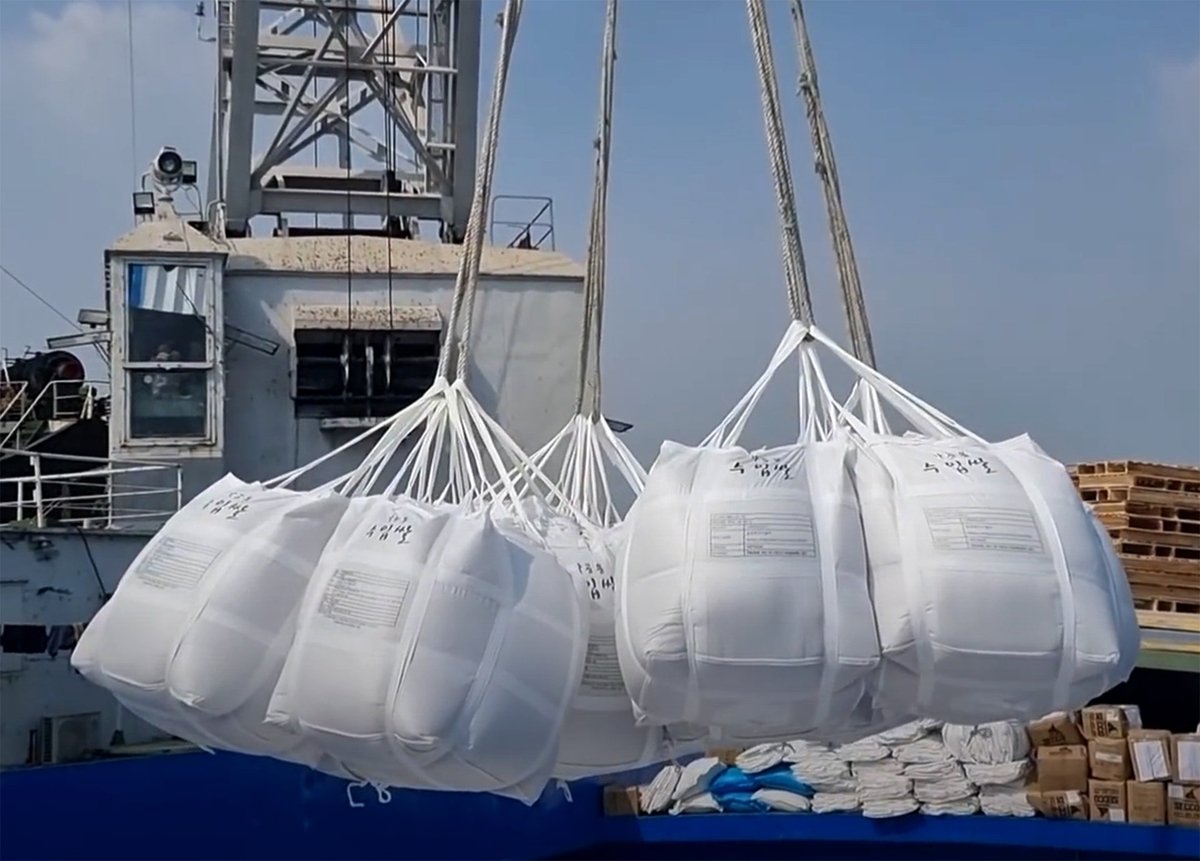November 22, 2025 | 17:42 GMT +7
November 22, 2025 | 17:42 GMT +7
Hotline: 0913.378.918
November 22, 2025 | 17:42 GMT +7
Hotline: 0913.378.918
Vietnam's rice exports this year have faced major challenges due to falling prices. Statistics from the Industrial and Trade Information Center under the Ministry of Industry and Trade show that in the first six months of the year, the average export price of rice dropped 18.4% compared to the same period in 2024. The sharp decline in rice prices led to export turnover in the first half of the year reaching only USD 2.44 billion, down 15.4% year-on-year.
The main reason for the drop in rice export prices is the abundant supply in the global rice export market. Since lifting its rice export restrictions, India, the world's largest rice exporter, has boosted shipments, especially as its 2024–2025 harvest hit a record 149 million tons, far exceeding domestic demand. India's rice exports this year are expected to rise by nearly 25% to a record 22.5 million tons.
However, while rice exports have fallen significantly in value, the volume has still increased. Speaking with VAN News, Do Ha Nam, Chair of the Vietnam Food Association (VFA), said that by the end of July, Vietnam had exported 5.5 million tons of rice, up about 4% compared to the same period in 2024.

Loading exported rice onto a vessel at a seaport in Ho Chi Minh City. Photo: Thanh Son.
Although Vietnam's rice export volume has only increased slightly in the past seven months, this is a very positive signal as Thailand, the world's second-largest rice exporter in 2024, has seen a sharp decline in its export volume. According to the Thai Ministry of Commerce, in the first six months of this year, the country's rice exports fell by more than 27% compared to the same period last year, reaching only 3.73 million tons (during the same period, Vietnam exported more than 4.7 million tons). Thus, at this point, Thailand ranks behind Vietnam in rice exports.
Do Ha Nam shared that many Thai traders have expressed admiration for Vietnam's rice sector. The country's rice exports have continued to increase while many others have declined.
Vietnam's rice exports have continued to rise in volume because Vietnamese rice has established a distinct market, thanks to varieties such as OM, DT8, and ST. These are rice varieties that only Vietnam can export. They are favored by many countries around the world, especially the Philippines.
Several other markets, including African nations, are also increasing imports of Vietnamese rice. In the first six months of the year, rice exports to Africa exceeded 1 million tons, and demand in this market continues to grow. Due to strong demand in many markets, there have been times when supply could not keep up with demand for varieties such as ST, DT8, and OM.

Rice harvest in An Giang province. Photo: Thanh Son.
Thanks to these premium rice varieties that fetch higher prices, at present, although the average export price of Vietnamese rice has declined due to overall global market conditions, it remains at USD 514 per ton, while the average export price in many other countries is only around USD 400 per ton.
A "hot" issue that may significantly impact Vietnam's rice exports in the remaining months of this year is the Philippines (Vietnam's largest rice market), which has temporarily suspended rice imports for 60 days (starting September 1, 2025) to protect domestic rice farmers amid continuously falling paddy prices.
Information from several rice exporters shows that to minimize the impact of the Philippines' temporary import suspension, companies are stepping up deliveries to this market in August. Many Filipino traders are also rushing to import rice before September 1. As a result, Vietnam's rice exports to the Philippines in August are expected to surge.
With the amount of rice already exported in the first seven months, Do Ha Nam predicted that by the end of 2025, Vietnam's rice exports will reach nearly 8 million tons, thereby ranking Vietnam second among global rice exporters. The United States Department of Agriculture (USDA) has also forecast that Vietnam's rice exports this year will reach about 7.9 million tons, surpassing Thailand (7 million tons) to take the world's second position, behind only India.
The United States' countervailing duties will not significantly affect Vietnam's rice exports, as this market accounts for only a small share. In the first six months of this year, Vietnam exported 21,000 tons of rice to the United States, worth USD 19 million. The U.S. market accounted for just 0.4% of Vietnam's rice exports in the first half of the year.
Translated by Huong Giang
/2025/11/21/4309-2-153400_128.jpg)
(VAN) Green and low-emission rice is paving the way for Vietnamese rice to enter high-end markets, marking the beginning of a transformation journey toward greening and elevating the national rice brand.

(VAN) ‘Right to Win’ outlines a national action plan that shapes a new vision for Viet Nam’s agriculture in an era of renewal and global integration.

(VAN) Lam Dong’s farmed sturgeon output this year is expected to reach 2,300 tons, worth VND 450 billion, affirming the brand’s position on the market.

(VAN) A surge in Ukrainian egg exports, largely driven by soaring sales to the UK over the last few years, has notably pushed up egg prices on the domestic market.

(VAN) The price of Arabica Catimor coffee in Quang Tri is currently at VND 25,000–27,000/kg (fresh cherries), the highest level ever recorded

(VAN) 'From the coffee story, we can think deeper and further about the crop production sector - from development orientations and value-chain organization to international integration,' assessed Dr Le Quoc Doanh.
/2025/11/18/2431-0-161627_248.jpg)
(VAN) Viet Nam accounts for 43% of the world's export volume of Robusta coffee. However, the Vietnamese Robusta coffee brand has yet to gain broad recognition on the global market.